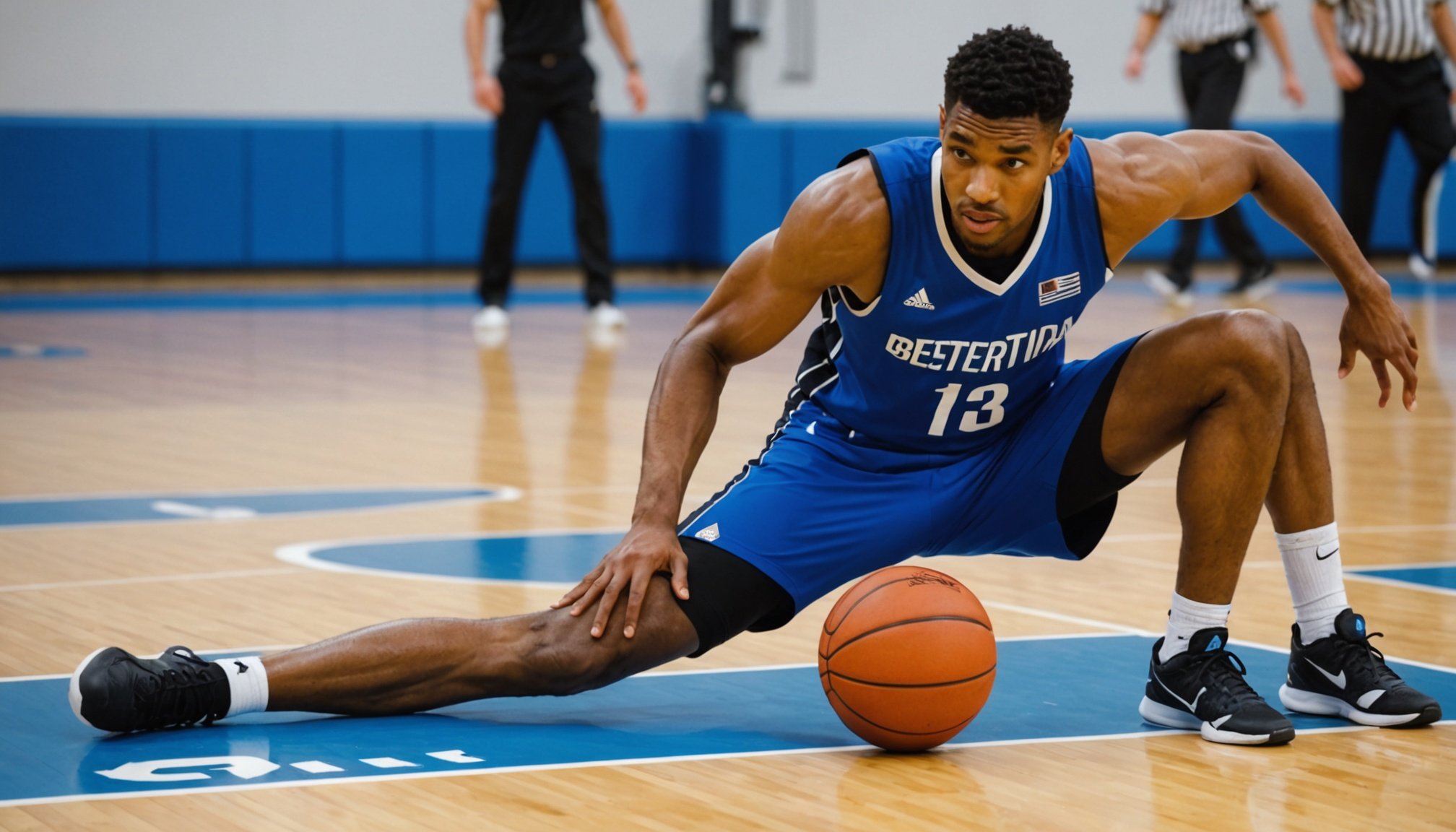Understanding the Importance of Flexibility in Injury Prevention
Flexibility training plays a crucial role in enhancing athletic performance for basketball athletes. Being flexible not only aids in improving agility and movement efficiency but is also vital for injury prevention. Common injuries seen in basketball, such as sprains and strains, can often be minimized through targeted flexibility training. Incorporating specific exercises into an athlete’s routine helps in maintaining muscle elasticity and joint mobility, which are essential in reducing the risk of such injuries.
Moreover, the relationship between flexibility and injury recovery cannot be underestimated. Athletes with higher flexibility levels frequently experience faster recovery times, allowing them to return to play sooner and with less risk of re-injury. For basketball players, maintaining optimal flexibility aids in quicker adaptation to the sport’s physical demands, ensuring prolonged careers and reduced downtime.
Also to read : Empowering uk basketball coaches: proven tactics to help players bounce back from consecutive defeats
In conclusion, integrating a well-structured flexibility training regimen not only acts as a safeguard against injuries but also bolsters overall athletic development. Emphasized flexibility enhances an athlete’s potential, ultimately contributing to better performance and longevity in basketball careers.
Effective Flexibility Training Exercises for Basketball Athletes
Flexibility exercises are an essential part of an athlete’s regimen, focusing on both dynamic and static stretching. Basketball athletes who engage in these techniques can enhance their performance significantly. Let’s explore these methods further to understand their impact.
Have you seen this : Elevate your game: key hydration tips for uk basketball athletes”
Dynamic Stretching Techniques
Dynamic stretching is especially beneficial pre-game. These stretches prepare the body for activity by gradually increasing heart rate and blood flow to the muscles. Exercises like walking lunges and high knees replicate basketball movements, helping improve muscle readiness and responsiveness. Implementing such stretches can reduce injury risk and elevate on-court agility.
Static Stretching Techniques
Post-game, static stretching aids in recovery and flexibility. Holding stretches such as the hamstring or quadriceps stretch ensures the muscles cool down effectively. Static stretching relieves tension and maintains muscle elasticity crucial for basketball-specific actions. This routine not only supports recovery but also enhances long-term flexibility.
Foam Rolling and Myofascial Release
Incorporating foam rolling optimises flexibility by reducing muscle soreness. Foam rolling focuses on myofascial release, helping athletes target specific areas like calves and shoulders. This technique improves circulation and releases muscle tightness, promoting overall muscle health and flexibility. Athletes can maintain and boost performance with minimal discomfort.
Sport-Specific Flexibility Recommendations
For basketball athletes, sport-specific training is essential to optimize performance and reduce injury risk. Tailored flexibility exercises enhance abilities based on an athlete’s position, such as guard, forward, or center. These roles necessitate distinct movement patterns; thus, customized flexibility plans can address the specific demands placed on different body parts.
Incorporating flexibility training within basketball drills is paramount. This integration helps athletes seamlessly blend flexibility exercises into their routine, maximizing benefits without requiring additional time. For example, during shooting drills, athletes can practice dynamic stretching to mimic the jumping and squatting actions inherent in basketball.
Moreover, considering cultural aspects within the UK basketball context, flexibility routines should accommodate local training practices. Recognizing cultural preferences can foster better acceptance and adherence among athletes, making flexibility training a natural and integral part of their regimen.
Adapting flexibility routines to suit both the position and the cultural context allows athletes to develop holistically, reducing the risk of injury while enhancing overall performance.
Expert Insights and Research on Flexibility for Injury Prevention
Understanding the role of flexibility in injury prevention is crucial for basketball athletes. Expert opinions from coaches and trainers emphasize the necessity of integrating flexibility training into regular routines. Interviews highlight how targeted exercises not only prevent injuries but also enhance overall athletic performance by improving joint mobility and muscle elasticity.
Recent sports science research supports these insights, demonstrating clear links between higher flexibility and reduced injury rates. Studies reveal that athletes engaging in comprehensive flexibility training experience fewer occurrences of strains and sprains, common injuries in basketball, due to improved range of motion and muscle preparation.
Research studies have confirmed specific flexibility exercises as effective tools for injury prevention. Findings suggest that dynamic and static stretching alongside foam rolling can significantly lower muscle soreness and enhance recovery time, allowing athletes to sustain peak performance levels.
Guidelines from sports health professionals reinforce the importance of tailored flexibility routines. Recommendations advise incorporating both proactive and reactive flexibility strategies — proactive for preventing injuries and reactive for addressing muscle tightness post-exercise. Emphasizing injury prevention, these expert-guided routines can cater specifically to individual athlete needs, contributing to longer, healthier sports careers.
Best Practices for Implementing Flexibility Training
Developing an effective flexibility training schedule is crucial for optimising athletes’ performance and minimizing risks. This involves integrating flexibility sessions seamlessly into regular training routines to ensure consistency and effectiveness. A balanced schedule might include dedicated times for dynamic stretching before practices and games, and static stretching or foam rolling during cooldowns.
Monitoring flexibility progress is essential to increase benefits and tailor programmes appropriately. Coaches and trainers need to assess each athlete’s current flexibility levels regularly. Utilising flexibility tests such as sit-and-reach or shoulder flexibility assessments can provide valuable insights into individual needs. Injury assessments further help in customising flexibility exercises, focusing on areas that demonstrate tightness or previous injuries.
Moreover, recognising early signs of tightness in athletes allows for timely adjustments to their training regimens, potentially preventing strains or sprains. Encouraging open communication with athletes ensures that they report any discomfort or limitations they experience during stretching routines. Regularly revisiting and adjusting flexibility plans according to these assessments can greatly contribute to maintaining athletes’ health and enhancing their on-court performance. Keeping flexibility training adaptable and individualised promises not only athletic improvement but also sustained injury prevention.











